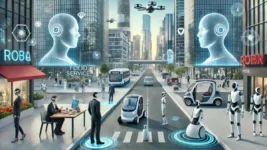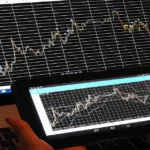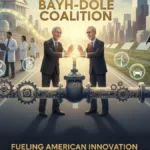NVIDIA’s GTC (GPU Technology Conference) has evolved into a premier showcase for artificial intelligence (AI) and accelerated computing. While NVIDIA has been known for its graphics processing units (GPUs) that power everything from gaming to data centers, recent GTC events have placed a significant emphasis on robotics. This focus suggests a future where robots are not confined to factory floors but become increasingly integrated into our daily lives.
NVIDIA’s Robotic Announcements
At recent GTC conferences, NVIDIA has unveiled a range of cutting-edge technologies aimed at advancing the field of robotics. These include:
- NVIDIA Isaac Platform: A comprehensive platform for developing, simulating, and deploying robots. Isaac provides developers with the tools and software they need to build AI-powered robots for various applications, as detailed on the NVIDIA Isaac Platform Overview.
- NVIDIA Jetson Modules: These are small, powerful computers designed to be the brains of robots. They provide the processing power necessary for robots to perceive their environment, make decisions, and interact with the world, as seen on the NVIDIA Jetson Platform.
- NVIDIA Omniverse: A simulation and collaboration platform that allows developers to create virtual worlds where robots can be trained and tested. This virtual environment is crucial for developing robust and safe robotic systems, and you can learn more on the NVIDIA Omniverse Overview.
- Foundation Models: NVIDIA is applying its expertise in large language models to robotics, enabling robots to better understand and respond to natural language commands. This will make robots more intuitive and easier for people to interact with, as highlighted in NVIDIA Research on Robotics and AI.
Personal Robotics: A Market Bigger Than PCs and Smartphones?
The potential market for personal robotics is staggering. While PCs and smartphones have revolutionized how we work, communicate, and access information, robots could go even further. Consider the possibilities:
- Household chores: Robots could handle tasks like cleaning, laundry and yard work, freeing up our time for other activities.
- Elderly care: Robots could provide companionship, assistance with daily living, and monitor health, enabling seniors to live more independently.
- Personal assistants: Robots could act as highly capable personal assistants, managing schedules, providing information, and performing complex tasks.
- Beyond the mundane: Robots could eventually take on dangerous jobs, explore other planets, and perform intricate surgeries.
If robots can successfully penetrate these markets, the total addressable market could indeed dwarf that of PCs and smartphones combined. Every household could have multiple robots, each performing specialized tasks.
Robots Replacing PCs and Smartphones
The long-term potential of AI-driven robotics is transformative. It’s conceivable that robots could eventually replace many of the functions of PCs and smartphones. Imagine a future where:
- Converged Devices: Instead of carrying a smartphone and using a laptop, we interact with a personal robot that can project information onto any surface, respond to voice commands, and perform tasks with physical dexterity.
- AI-Powered Interaction: We communicate with these robots using natural language, and they learn our preferences and anticipate our needs.
- Head-Mounted Displays (HMDs): Devices like the Apple Vision Pro could become the primary interface, providing immersive augmented reality (AR) experiences, with robots acting as our physical avatars in the real world.
- Brain-Computer Interfaces (BCIs): In the more distant future, direct mind-to-machine communication could eliminate the need for traditional input devices altogether, as explored in Brain-Computer Interfaces Research.
Advantages of This Future
This future offers several potential advantages:
- Increased productivity: Robots could automate many tasks, freeing up human time for more creative and strategic pursuits.
- Enhanced quality of life: Robots could provide personalized care, assistance and companionship, improving overall well-being.
- New possibilities: Robots could enable us to explore new frontiers, both on Earth and in space, and perform tasks that are currently beyond human capabilities.
Disadvantages and Potential Dangers
However, this future also presents significant challenges and potential dangers:
- Job displacement: The widespread adoption of robots could lead to significant job losses in various sectors, as detailed in the Impact of Automation on Employment.
- Ethical concerns: We would need to address complex ethical questions related to robot autonomy, decision-making, and the potential for misuse, as discussed in the Ethics of Artificial Intelligence.
- Existential risks: If AI and robotics development are not carefully managed, there’s a potential risk of unintended consequences, including the possibility of robots becoming uncontrollable or even posing a threat to humanity, a topic explored in Existential Risks of Artificial Intelligence.
- Dependence: Over-reliance on robots could lead to a decrease in human skills and capabilities.
The Need for Protections
To mitigate these risks, it’s crucial to establish robust safeguards and ethical guidelines. These may include:
- Safety protocols: Strict regulations and standards for robot design, manufacturing, and operation.
- Ethical frameworks: Development of ethical principles to guide the behavior of AI-powered robots.
- Security measures: Protection against hacking and malicious control of robots.
- Human oversight: Maintaining human control over critical decisions and preventing robots from operating autonomously in potentially harmful situations.
Wrapping UP: NVIDIA’s Leadership
NVIDIA remains at the forefront of AI hardware and robotic intelligence. Its GPUs, software platforms, and developer tools are essential for the advancement of this technology. GTC continues to be a crucial event for anyone interested in the future of AI and robotics, showcasing the latest breakthroughs and providing a glimpse into the transformative potential of these technologies.








